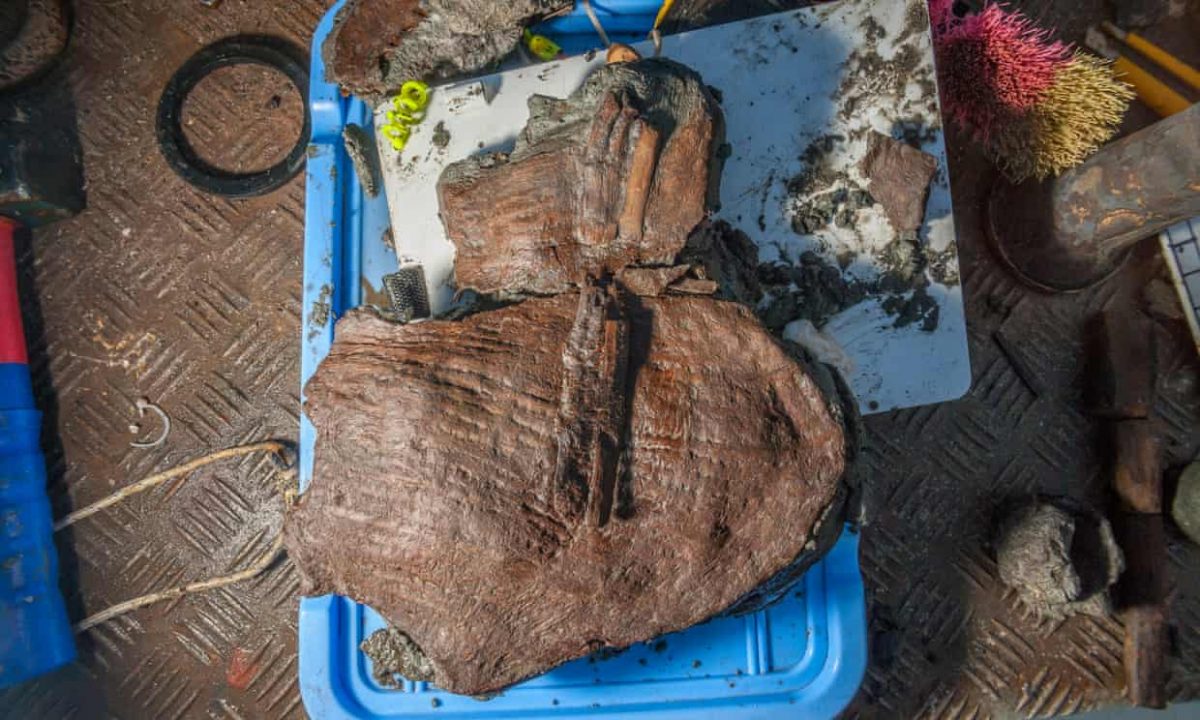In what can be described as simply incredible from the point of view of archaeologist and historians, a virtual treasure trove of ancient objects and artefacts have been found from the ruins of the ancient, legendary city of Thonis-Heracleion of the Egyptian coast. A city which once boasted as Egypt's largest port for centuries.
Among the objects found are ceramic artefacts, bronze treasures and most remarkably, a wicker basket containing fruits! All these have remained untouched ever since the city went under the waves in the second century BC with subsequent earthquakes and tidal waves sinking it further.
This ancient city was completely off people’s memory till it was rediscovered by Franck Goddio, a French marine archaeologist nearly 20 years ago, making it one of the greatest finds.
Among the treasures found were colossal statues that reflect the rich civilisation they belonged to.
The latest discoveries took Goddio by surprise. In an article in The Guardian, he said that the fruit baskets were “incredible” having remained untouched for more than 2,000 years.
The basket was filled with doum, an African palm tree fruit which was considered sacred by the ancient Egyptians, and also grape-seeds.
“Nothing was disturbed. It was very striking to see baskets of fruits,” remarked Goddio.
Giving reason for their survival for centuries, Goddio said it could be because they were kept in an underground room, which could possibly have a funerary connotation.
This room is in an area where Goddio along with his team of archaeologists had found a big tumulus. A tumulus is a mound which is raised over graves and the dimension of this one was 60 metres long by eight metres wide and with abundant Greek funerary offerings.
These belong to the early 4th Century BC, a period when Greek merchants and mercenaries lived in Thonis-Heracleion. This ancient city was important considering that it controlled the entrance into Egypt at the mouth of the Nile. The Greeks made the region their home when they were allowed to do so in the late Pharaonic period.
Providing a description of the tumulus Goddio said: “It is a kind of island surrounded by channels. In those channels, we found an unbelievable amount of deposits made of bronze, including a lot of statuettes of Osiris [the ancient Egyptian fertility god]. On that island, something totally different. We found hundreds of deposits made of ceramic. One above the other. These are imported ceramic, red on black figures from Attic.”
What made the discovery intriguing was that a large quantity of miniature ceramics of high quality ancient Greek, like for example amphorae, were found under the tumulus while around it, bronze artefacts, including mirrors and statuettes were discovered.
There was also evidence of burning found by Goddio. This according to him suggested a big ceremony following which people were not allowed to enter this site again. The proof that the place was sealed can be deduced from the fact that none of the artefacts discovered were from later than the early fourth Century despite the fact that the city continued to be in existence for many hundred years.
Goddio remarked: “There’s something very strange here. That site has been used maybe one time, never touched before, never touched after, for a reason that we cannot understand for the time being. It’s a big mystery.” He is hopeful of finding some answers to these puzzling questions in the discovered treasures, which include a wooden sofa for banquet, a gold amulet and a large Attic vase.
Researchers also found some 350 metres away, a unique Ptolemaic galley. It measures 25 metres in length and even though built in the classical tradition using mortise-and-tenon joints, it shows ancient Egyptian construction attributes. These include a flat-bottomed design making it good for navigating in the Nile and the delta.
The finds will be examined and researched by the experts before they are preserved and put on display in the museum.
As per Goddio even after many excavations for the last two decades, only three per cent of the area has been explored and studied so far, so there is promise of many more engrossing discoveries.




















